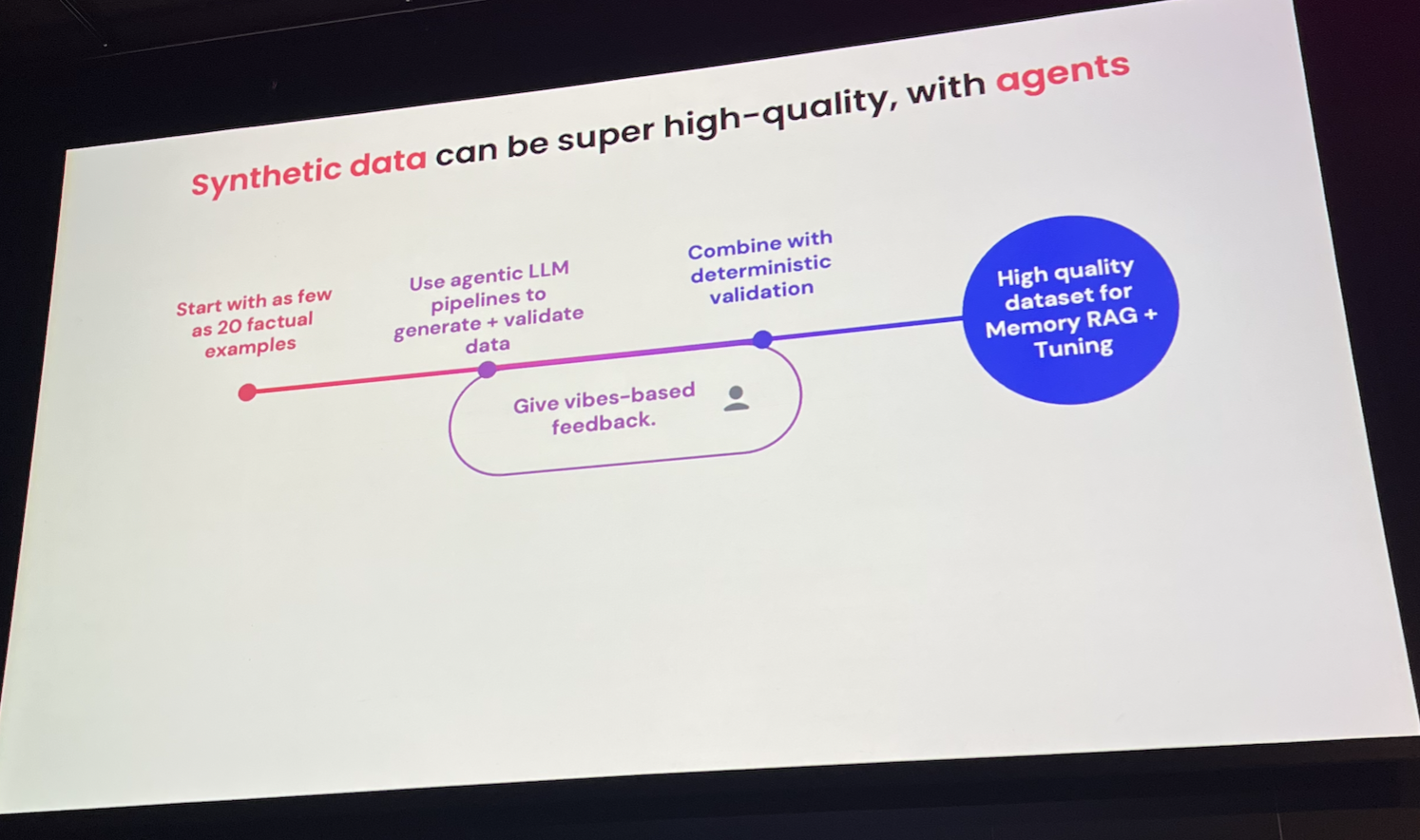Vibe copywriting… yes, it’s a thing
|
Welcome to this week's issue of Unpacking Meaning. If you received this from a friend and enjoy it, subscribe here. I'm writing this as I'm about to fly back from Edinburgh after attending Turing Fest 2025. Among many brilliant speakers discussing AI, one presentation particularly sparked my thinking: Sharon Zhou, PhD, Founder & CEO of Lamini (a developer platform focused on making AI not hallucinate). In her talk about fine-tuning AI models, Dr. Zhou showed how even AI agents can now be trained with "vibe-based feedback" - essentially guiding AI through intuitive responses rather than rigid rules.
This immediately connected with how I've been approaching copywriting with AI tools. Vibe copywriting - yes, I’m making it a thing - sits at this fascinating intersection where AI capabilities meet human intuition. The process becomes less about writing and more about directing, refining, and shaping. Instead of crafting copy from scratch, you're having a conversation with AI. Make this more conversational. This feels too formal - can we tone it down? The value proposition isn't coming through clearly enough. You're giving vibe-based feedback until the copy resonates with what you're trying to achieve. The democratization trapYes, this approach levels the playing field. Anyone can generate decent first-draft copy with the right prompts and feedback loops. But what many miss is that your feedback is only as good as your understanding. This is where the copywriter's "sixth sense" becomes more valuable than ever. That intuition doesn't come from nowhere - it's built from deep customer research, countless interviews, analyzing voice of customer data, studying competitors, collaborating with internal teams, and years of testing what works and what doesn't. The tools might be democratized, but the expertise to use them effectively isn't. In fact, the feedback loop intensifies the need for strategic insight. Think about it: when you tell AI to "make this more compelling," what exactly do you mean? Compelling to whom? In what context? Toward what goal? Without clear answers to these questions - answers that come from real research and experience - you're just throwing vibes at a wall and hoping something sticks (reason why also providing the LLM with real context and research is essential). What I find most exciting about this approach is how it transforms the copywriting process → Do the deep research work (this never changes) → Feed that research to your AI collaborator → Generate initial drafts quickly. Apply your expert "vibe feedback" based on research insights. Iterate until the copy resonates. The result is copy that's both AI-efficient and human-intuitive, grounded in real customer understanding. Anyone can play around with AI copy tools, but those who combine them with legitimate research and developed intuition will consistently outperform those who rely on vibes alone. What do you think? p.s. Loved sunny Edinburgh... DISCOVERYTuring Fest 2025 is a wrap!Had a ton of fun, great conversations and learning In Edinburgh over the past 2 days. A few key lessons and reminders:
RESONANCE"Not-knowing is true knowledge. Presuming to know is a disease. First realize that you are sick; then you can move toward health. The Master is her own physician. She has healed herself of all knowing. Thus she is truly whole." Tao Te Ching Have a great weekend! Cheers, Chris 🙌🏻 Let’s be friends (unless you’re a stalker) When you're ready, here's a few ways I can help |
Hi, I'm Chris, The Conversion Alchemist
I'm the founder and chief conversion copywriter at Conversion Alchemy. We help 7 and 8 figure SaaS and Ecommerce businesses convert more website visitors into happy customers. Conversion Alchemy Journal is the collection of my thoughts, ideas, and ramblings on anything copy, UX, conversion rate optimization, psychology, decision-making, human behavior, and -often times - just bizarre, geeky stuff. Grab a cup of coffee and join me. Once a week, every Friday.
Read online Welcome to this week's issue of Unpacking Meaning. If you received this from a friend and enjoy it, subscribe here. Most teams treat messaging like a moodboard. Disjointed. Decorative. A little bit of this, a little bit of that. Each new landing page, sales deck, or onboarding email feels like starting from scratch. They’re mixing and matching taglines, rephrasing value props, rewriting what’s already been written—because they don’t have a system. They think they’re iterating, but...
Read online Welcome to this week's issue of Unpacking Meaning. If you received this from a friend and enjoy it, subscribe here. I recently received my voting cards from Italy. As an Italian living in the UK, this isn't unusual, but what struck me this time was how absurdly hard it was to understand what I was being asked to vote on. Here’s one of the ballots: And here’s a literal translation for your eyes to bleed on: “Do you want the repeal of Article 8 of Law 604 from July 15, 1966, titled...
Read online Welcome to this week's issue of Unpacking Meaning. If you received this from a friend and enjoy it, subscribe here. What if your next round of customer research didn’t involve a single customer? That’s the future being painted by a new wave of AI-native research platforms — ones that don’t just automate surveys or analyze reviews, but simulate entire societies of agents who think, talk, shop, and even complain like your customers. I read a piece this week from a16z about this...
